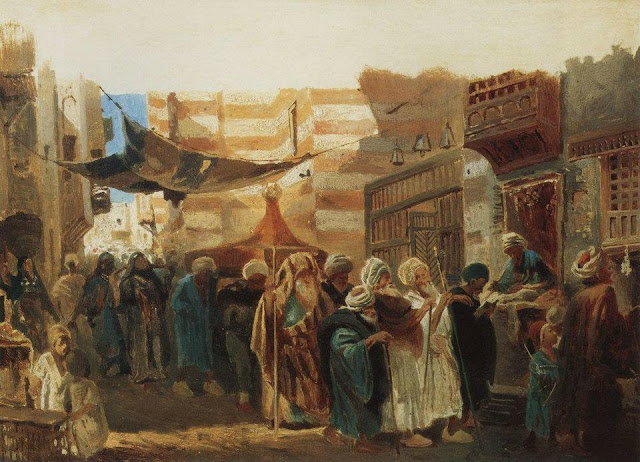Konstantin Makovsky Russian (1839-1915)
From Wikipedia, the free encyclopedia
This article includes a list of references, related reading or external links, but its sources remain unclear because it lacks inline citations. Please improve this article by introducing more precise citations. (September 2010)
Children of the Artist, 1882
Konstantin was born in Moscow as the older son of a Russian art figure and amateur painter, Yegor Ivanovich Makovsky. His mother was a music composer, and hoped his son would one day follow up.
In 1851 Konstantin entered the Moscow School of Painting, Sculpture and Architecture where he became the top student, easily getting all the available awards. His teachers were МM.I. Skotty, pupils of Karl Brullov. Makovsky's inclinations to Romanticism and decorative effects can be explained by the influence of Briullov.
As though art was his passion, he also considered what his mother had wanted him to do. He set off to look for composers he could refer to, and first went to France. Before, he had always been a classical music lover, and listened to many pieces. Some times he often wished he could change the tune, or style of some of them to make them more enjoyable. Later in his life, it came true.
After talking to various musicians, conductors, and composers of his day, he enjoyed France very much and set off to "fix" the pieces. He tried and succeeded in Cannon in D, Fur Elise, Cadimendia, Rhapsody in Blue, and many other famous pieces. He was a hit! Everyone liked his new style, and decided to make more. But then realized how much into art he was. He wanted to impress his father, so went back to art. (all of those pieces and others can be found on youtube.com or musiclistener.com!!!)
In 1858 Makovsky entered the Imperial Academy of Arts in Saint Petersburg. From 1860 he participated in the exhibitions of Academia with paintings such asCuring of the Blind (1860) and Agents of the False Dmitry kill the son of Boris Godunov (1862). In 1863 Makovsky, together with the other 13 students eligible to participate in the competition for the Large Gold Medal of Academia, refused to paint on the set topic in Scandinavian mythology and instead left Academia without a formal diploma.
Makovsky became a member of a co-operative (artel) of artists led by Ivan Kramskoi, typically producing Wanderers paintings on everyday life (Widow 1865,Herring-seller 1867, etc.). From 1870 he was a founding member of the Society for Traveling Art Exhibitions and continued to work on paintings devoted to everyday life. He exhibited his works on both the Academia exhibitions and the Traveling Art Exhibitions of the Wanderers.
A significant change in his style occurred after traveling to Egypt and Serbia in the mid-1870s. His interests changed from social and psychological problems to the artistic problems of colors and shape.
In the 1880s he became a fashioned author of portraits and historical paintings. At the World's Fair of 1889 in Paris he received the Large Gold Medal for his paintings Death of Ivan the Terrible, The Judgement of Paris, and Demon and Tamara. He was one of the most highly appreciated and highly paid Russian artists of the time. Many democratic critics considered him as a renegade of the Wanderers' ideals, producing (like Henryk Siemiradzki) striking but shallow works, while others see him as a forerunner of Russian Impressionism.
Makovsky became a victim of a road accident (his horse-driven carriage was hit by an electric tram) and died in 1915 in Saint Petersburg











































































































































































.jpg)



































Tidak ada komentar:
Posting Komentar